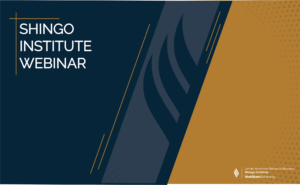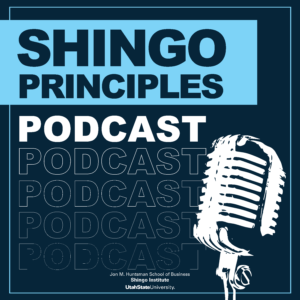by Norbert Majerus, Shingo Faculty Fellow
In his article “Unlearning What Toyota Taught Us,”1 John McElroy lauds Tesla’s success with electric vehicles (EVs) and describes how the company has outpaced Toyota with EVs. He references the book, The Toyota Product Development System,2 when describing the highly standardized Toyota product development process and contrasts it with the process used by Tesla, which includes more rapid improvements, no spec freezes, and changes after the launch. McElroy also remarks how Tesla customers tend to be forgiving of Tesla’s quality problems as the company rapidly pushes ideas to market.
Do Tesla customers appreciate their Tesla cars, despite the shortcomings, more than Toyota customers favor their autos? Are Tesla’s efforts, such as creating Apple-like stores, installing charging stations next to gas pumps, and offering their own insurance, adding a different value for existing and new customers?
What is happening between Tesla and Toyota is not new. It is a result of the “innovator’s dilemma,”3 described in 1997 by Clayton Christensen. His well-accepted research shows that companies that are masters at developing the right product for their current customers as well as evolutionary innovations are prone to lose out to breakthrough innovations. Breakthrough innovators focus more on product opportunities than on fulfilling customer demands, building markets, and finding new customers if value emerges. Business results for breakthrough innovations are typically unpredictable, and the risk for failure is high. Consequently, many well-established companies—Toyota, Kodak, Blockbuster, Nokia, BlackBerry, and Yahoo, among others—leave breakthrough innovations to the startups.
Some incumbents, however, will stay in the breakthrough game by learning from the plethora of startups that fail as well as those like Tesla that succeed. They also look to mergers or acquisitions as a less risky way to tap into breakthrough innovations.
Is Tesla’s success a wake-up call for Toyota and other car manufacturers? Is there a Lean or operational excellence principle that can help established companies succeed with breakthrough innovations? Does Toyota have a tool in its repertoire? Yes it does! I call it a “Lean culture of innovation,” and it consists primarily of a Lean culture, of which Toyota is still the benchmark, and an innovation culture based on principles that foster ideas and a fast, cost-effective, disruptive innovation process.
A Lean culture of innovation begins, like every improvement, with education. It teaches why innovation is needed and how it works. Like every good Lean education, the focus must be on the innovation principles, including:
Finally, an innovation culture is as much about people as it is about a Lean culture. The Shingo Model, emphasizing respect for people, humble leadership, engagement, empowerment, etc. is critical to integrate innovation and bring ideas to life in the Lean culture. As companies embrace an innovation culture, they will quickly learn that Lean is not really stifling innovation (as is often claimed). They will learn that standard processes and creativity can coexist and harmonize. And the Lean culture has always emphasized that continuous learning and improving will bring these critical traits to innovation, just as it has in operations and other corporate functions.
These and many other innovation principles that complement a Lean culture are described in Winning Innovation,5 a business novel I wrote with George Taninecz that illustrates the challenges of transforming a well-established company, embedding an innovation culture, and changing people’s behaviors and beliefs along the way.
It is not too late for Toyota. Many established companies have been victims of the innovator’s dilemma, but many have learned and thrived with disruptive innovation, including AT&T, HP, Seagate, Discover Financial Services, and Walmart. I have personally witnessed how companies like The Goodyear Tire & Rubber Company and Akron Children’s Hospital have transformed their organizations to a Lean culture of innovation and achieved benefits that usually are attained only by startups.
To learn more about creating a Lean culture of innovation, please join me for a virtual Shingo webinar on January 5, 2023, from 9:00-9:30 a.m., US Eastern. You can register for the event at https://shingo.org/events.
Norbert Majerus may be reached at norbert.majerus@gmail.com.
References
1 John McElroy, “Unlearning What Toyota Taught Us,” Wards Auto, Nov. 23, 2021. https://www.wardsauto.com/industry-news/unlearning-what-toyota-taught-us
2 James M. Morgan and Jeffrey K. Liker, The Toyota Product Development System – Integrating People, Process and Technology, Productivity Press, 2006.
3 Clayton M. Christensen, The Innovator’s Dilemma – When New Technologies Cause Great Firms to Fail, Harvard Business School Press, 1997.
4 An autonomous unit within an organization with a high degree of freedom to develop new product and service ideas.
5 Norbert Majerus and George Taninecz, Winning Innovation, Productivity Press, 2022.


Optional footer text. If none, Advanced > Layout > Display: None